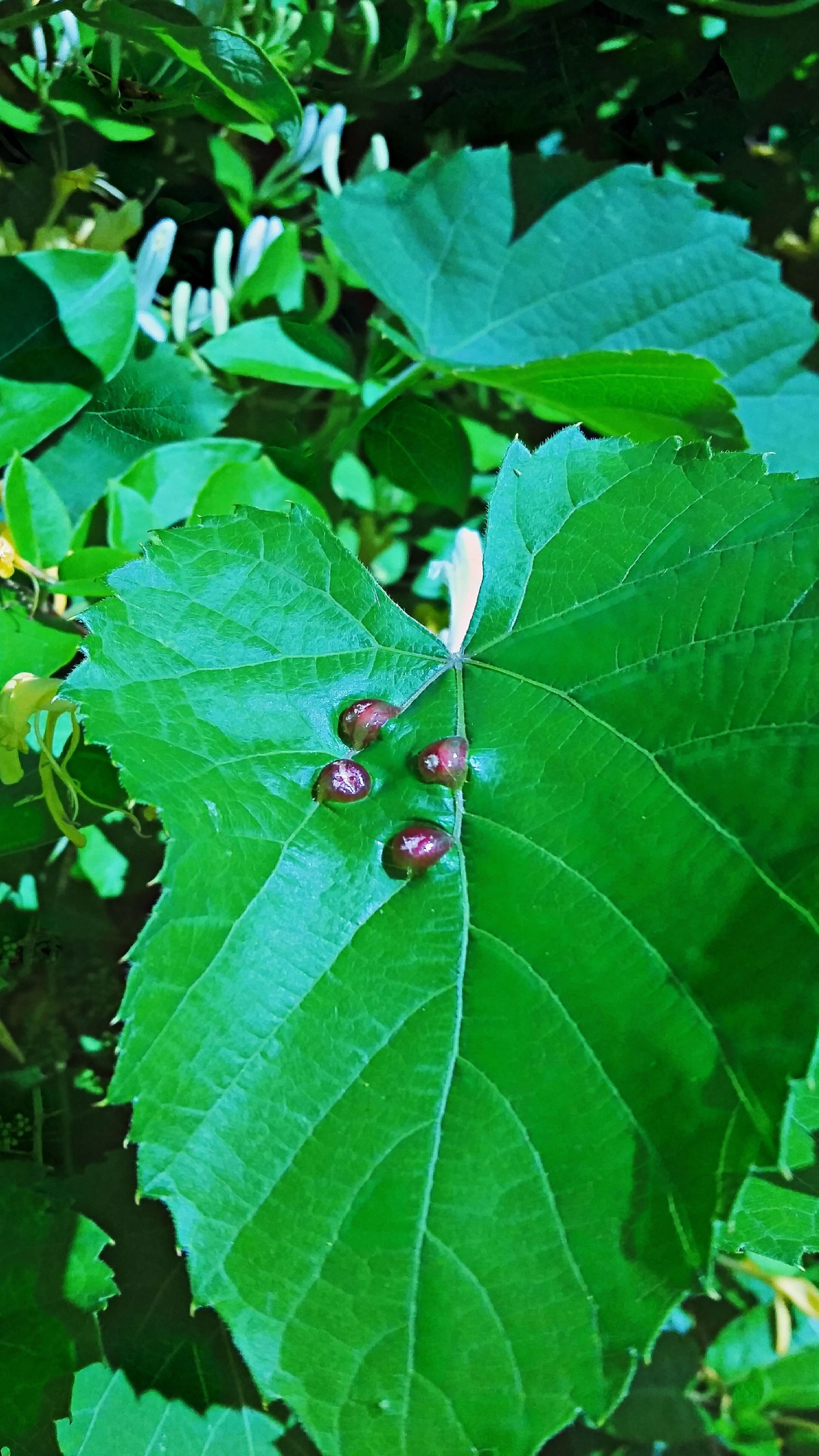Blister Mite Control On Grapes: Treating Grape Leaf Blister Mites

If you've noticed irregular blotches or blister-like lesions on your grape leaves, you may be wondering what, or who the culprit is. Although you may not see them, chances are good that this damage is the product of blister leaf mites. Read on to learn how to spot grape erineum mite damage and what other grape leaf blister mite info is helpful for controlling or eradicating these pests.
Grape Leaf Blister Mite Info
Adult blister leaf mites are tiny-- smaller than a mote of dust. If you could view them with the naked eye though, you would see cream-colored worms with two pairs of legs. Grape erineum mite damage appears on young leaves as dark green to pink tinged swellings on upper areas. The underside of leaves have a concave appearance, littered with blister-like edemas covered with a felted carpeting of dense long leaf hairs. Erineum mites overwinter on the grapevines and move on to the new growth in the spring. They feed in groups beneath the swellings and, as their numbers increase, move to new areas of the vine. From late summer into autumn, the mites move back to the bud scales to overwinter. While unsightly, treating grape leaf blister mites is generally unnecessary. Leaves afflicted with the erineum galls or swellings function normally and there is no effect on grape production unless the vine is suffering from additional grapevine diseases, pests, or environmental stresses. These mites can affect growth and production of newly planted, very immature vines, however, so blister mite control in these cases may become needed.
Blister Mite Control
Different grape varieties are more susceptible to erineum mites. In young plants, removing and disposing of infested leaves can control light infestations. A natural predator, Glaendromus occidentalis, feeds on erineum mites. Introduction of this predator has some effect on reducing their numbers; however, the tiny mites are often protected by the dense hairs of the galls. In vineyards, blister leaf mites are rarely an issue when the property has been routinely treated for powdery mildew with applications of Sulphur early in the growth season. A number of other chemical sprays used for the control of leafhoppers and spider mites also stem the population of blister leaf mites. For the home grower, however, again, there is very little need for treating grape leaf blister mites with a chemical measure. The effects from these tiny mites are primarily aesthetic, and should simply be tolerated. You should still get a bumper crop of grapes, provided all other conditions are favorable.
Sign up for the Gardening Know How newsletter today and receive a free copy of our e-book "How to Grow Delicious Tomatoes".

Amy Grant has been gardening for 30 years and writing for 15. A professional chef and caterer, Amy's area of expertise is culinary gardening.
